
Promotional photo of Florence Farr from the Abbey Theatre, also known as the National Theatre of Ireland. One of the leading Irish playwrights at the Abbey was Florence’s friend and fellow Golden Dawn member, William Butler Yeats. Like Yeats, Florence would play an important role in the Golden Dawn, where she became a pioneer in scrying, astral travels, and Egyptian magic.
In 1896, London, some of the most revered Adepts of the Hermetic Order of the Golden Dawn gathered to perform a ritual written by Aleister Crowley’s teacher, the man who basically introduced Buddhism to the west and institutionalized it in the UK: Allan Bennett. The ritual would make the spirit of Mercury physically manifest before them. Allan Bennett was there as an assistant Magus, the master of the ceremony, Florence Farr, who was a beautiful woman dressed in a white robe adorned with a yellow sash and on her head she wore an indigo nemes – the headcloth of the pharaohs. Around her neck she wore the seal of Taphthartharath, the spirit of Mercury, around her waist was a belt with a holy dagger, in her left hand she held an Egyptian symbol of immortality, and in her right hand, she held a lotus wand. Before them was a cauldron of simmering hellbroth to attract the spirit of Mercury, Taphthartharath, sometimes described as malevolent (Agrippa), but however complementary to Mercuries intelligence, Tiriel. The participants to the ritual claimed that they saw an arm and a leg appear first until the apparition emerged as a gray human which emanated immense power. After just a few minutes, it disappeared.
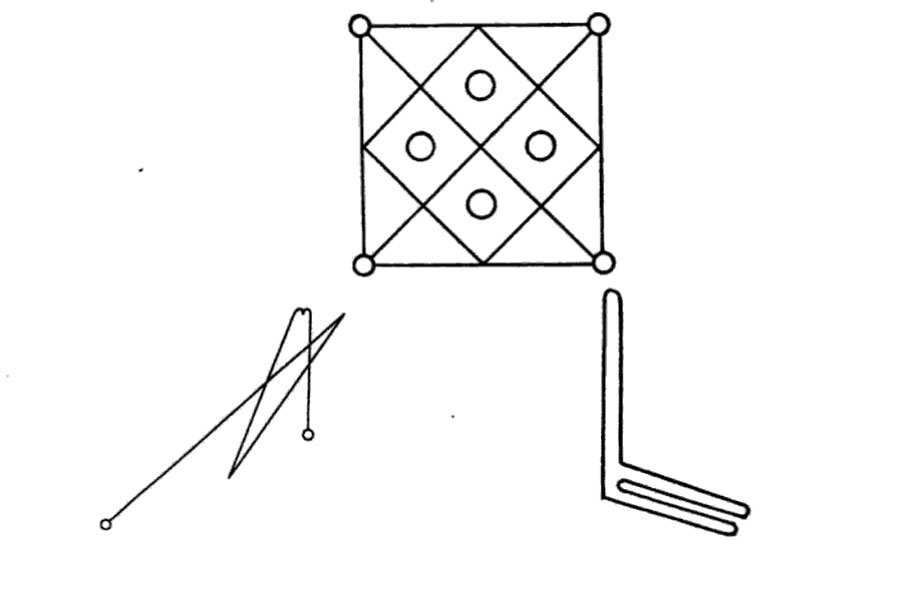
The sigil of planet Mercury (center, up), intelligence Tiriel (left, down) and the spirit, Florence Farr evoked: Taphthartharath (right, down).
Florence Farr was respected as the Order’s most powerful seer and for her ability to summon Taphthartharath. Not only was she one of the most prominent female occultists of her time. She was also one of those in the Golden Dawn, who denied Crowley’s advancement into the inner order (5=6) due to his libertine lifestyle, and she is also an icon of the first wave of feminists of the 19th century. She was the muse who inspired Crowley’s Soror Cybele in his “Moonchild” novel from 1917, she was several years the muse and lover of George Bernard Shaw, who wanted her as the “New Woman” and star of his plays, and more notably, she was the muse who made William Butler Yeats shiver with her voice. After her death, in yearning, Yeats called upon her in his poem “All Souls’ Night”:
“On Florence Emery I call the next,
Who finding the first wrinkles on a face
Admired and beautiful,
And by the foreknowledge of the future vexed;
Diminished beauty, multiplied commonplace;
Preferred to teach a school
Away from neighbor or friend,
Among dark skins, permit foul years to wear
Hidden from eyesight to the unnoticed end.”
Florence Farr’s Life and Herstory

“The Golden Stairs” or “The King’s Wedding” or “Music on the Stairs” from 1880, one of the best-known paintings by the Pre-Raphaelite artist Edward Burne-Jones. The painting features Florence Farr and her friend, May Morris, alongside other of Burne-Jones’ favorite models at the time, such as his daughter, Margaret. The painting depicts the women as dreaming musicians, a role Florence will get closer to in her acting career.
Florence Beatrice Farr was born on July 7, 1860, in Blickley, nowadays part of the Greater London area, in Kent, England. Her mother was already forty-three and the second wife of physician Dr. William Farr, who named the newly born Florence after his friend and nursing pioneer, Florence Nightingale. Dr. Farr was known as an advocate of professional and educational equality for women at the time, which strongly impacted Florence’s feminist views from an early age. In 1873, Florence attended the Cheltenham Ladies College, and from 1877 to 1880 and later she attended the first woman’s college in England, the Queen’s College. At the age of 19, her childhood friend May Morris introduced Florence to the artistic and scholar circles in London at the time, and she even modeled with her friend for “The Golden Stairs”, a Pre-Raphaelite painting by artist Sir Edward Burne-Jones.
Marriage – Florance Emery
After she graduated from college, Florence became a teacher for a short while, before she followed her dream to become an actress and started taking minor roles at the Folly Theater. Her father didn’t want the family name to be associated with theater, so Florence adopted the stage pseudonym of Mary Lester. She switched back to her real name after her father died in 1883, when she also began working at the Gaiety Theater. In 1884 she married Edward Emery, a fellow actor. While Florence Emery stopped her career to fit into the role of a Victorian wife, her husband Edward was often occupied with drinking and gambling. Four years later, in 1888 Edward Emery left to America and neither Florence nor his family would try to stop him.
In 1895, after her first successes, she divorced him upon the advice of Bernard Shaw, who feared Florence’s husband could return now and raise claims against her. But Edward agreed without complications into the divorce. Florence Emery Farr would remain a free woman for the rest of her life.
W.B. Yeats, Rebirth as Magus and Initiation into the Golden Dawn
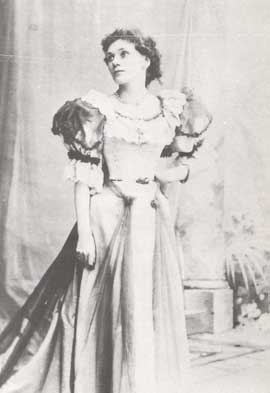
Florence Farr in 1890 at the Folly Theater. In this year she first met her friend and professional associate, William Butler Yeats. Yeats also introduced her to the Hermetic Order of the Golden Dawn and Florence became the 88th member. Ritual magic would become a constant in her life.
Florence was now 28 and practically, free again. The eventful years to follow were economically a challenge, despite hard work, but on the other hand, full of opportunities she would take on.
In 1890, the year Florence would turn 30, was the first of many eventful ones: She moved to Bedford Park, another suburb in the Greater London Area, known for its community of bohemians, free thinkers, artists, writers, and women of power. She thrived in the community as an early feminist who advocated for women’s equality. She moved in with Henrietta, her sister, and Henrietta’s husband, the painter and stage designer, Henry Marriott Paget.
It was around this time that she met the roughly five years younger poet and Golden Dawn member, W.B. Yeats, who also lived in Bedford Park, when he commissioned a portrait of himself from Florence’s brother-in-law. Yeats also introduced her to McGregor and Moina Mathers. They first met at Madame Blavatsky’s place. Florence was initiated in the Golden Dawn in 1890 and took the magical motto “Sapientia Sapienti Dona Data” or “Wisdom is a gift given to the wise”. She and Yeats often would visit the Mathers family in their home at Forrest Hill, in the South-East of London.
Scrying and Clairvoyance
Her life surrounded by magicians was interesting: in her wonderful and empathetic read Mary Greer (The Woman of the Golden Dawn – probably the best source so far on Florence Farr – the magician) quotes Yeats’memoirs: one day while being on a walk Mathers pointed to a flock of sheep and told Florence he would now imagine himself being a ram. Interestingly, the flock started to follow Mathers. Another time he subdued a thunderstorm with his Masonic sword. But what seemingly impressed her the most is when Mathers held a paper card with a geometrical symbol to her forehead and she had a vision of walking on cliffs above the water, seeing and hearing the seagulls around. The vision was so lively and real, that it obviously impressed Florence so much, she would become a pioneer in this techniques.

The 25 Tattva symbols as used on the Tattva cards in the Golden Dawn: Tattva (sometimes Tattwa) stands in Sanskrit for element or principle, an aspect of reality. The symbols are representations of the five elements and their possible combinations, as each element, is said to contain all the other elements, just as any Sephirah on the tree of life contains all other Sephiroth within. In the case of the elements, this leads to 25 combinations or Tattvas. The first line represents Tejas (red – fire element) and its five aspects (fire of fire, fire of earth, fire of water, fire of air, fire of akasha), followed by Prithivi (yellow – earth element), Apas (silver – water element) and Vaju (blue – air element). Finally Akasha (usually black or violet – aether). The Golden Dawn used this 25-er system as used in Hindu Tantrism. Astral journeys and visions by using the tattvas as gateways was an important practice in the Golden Dawn. Florence Farr would become a pioneer in this, and other disciplines – labeled as “clairvoyance”.
The technique Mathers showed to her was popular in the Golden Dawn and was often used for clairvoyance or scrying. “Clairvoyance” as defined in the Golden Dawn came in three stages: seeing, traveling, rising:
- Seeing – the main objective here was to obtain a vision. Usually, this would happen in the temple and with the help of external tools, such as a scrying mirror
- Traveling – Astral projection; the conscious mind leaves the physical body and wanders the astral world
- The active traveling on the paths between the sephiroth of the cabalistic tree of life
For clairvoyance, the Golden Dawn often used symbols such as the Tattvas (elements), planetary symbols, but also Tarot cards or sigils as gateways. The ritual of the qabalistic cross and the banning pentagram ritual should be performed for protection and the visions should be tested by other rituals, gestures, and signs taught in the Golden Dawn, but also by the vibration of the Hebrew names of God. False visions would not withstand, while authentic visions would persist. Often a scribe was also present, to take note. Many teachings of the Golden Dawn were obtained through scrying, and Florence would be one of the pioneers, alongside Moina Mathers. And another talent already started to show up: her voice and vibration, which she applied both in magic and in theatre.
Theatre and George Bernard Shaw

W.B. Yeats in 1900. The Irish poet, nobel prize winner, later member of the Irish senat and fellow magician. Yeats and Florence would nurture a life long friendship and also be lovers. But before, Yeats dwelled in one-sided romantic feelings for actress and Golden Dawn member Maude Gonne. Florence, would first have a long and tumultuous relationship with George Bernard Shaw. However, their friendship remained a constant until Florence death’. Portrait by artist and painter John Butler Yeats – Williams father.
The same year, Florence played the role of the Priestess Amaryllis in the theatrical production “A Sicilian Idyll: A Pastoral Play in Two Scenes”, by playwright and later Golden Dawn member, John Todhunter, who was also an associate of W.B. Yeats. Some say that Todhunter joined the Golden Dawn to be near to Florence Farr. The political activist, critic, and playwright, George Bernard Shaw, was in the audience to review the play. Although he was unimpressed by the play itself, he considered Florence’s performance outstanding and described her as a “startling beauty” with “large expressive eyes, crescent eyebrows, and luminous smile”. Florence and Shaw met also at the meetings of the socialist league.
One evening, he walked her home and this was the beginning of a year-long lasting relationship with many ups and downs, ons and offs. Shaw was emotionally unstable and often involved with more than just woman, even though, reportedly many of these adventures remained platonic in nature.

George Bernard Shaw in 1889, one year before he and Florence would meet. The Irish playwright, socialist and critic and Florence Farr would be emotionally involved for many years. However, Shaw used to be emotionally involved with many women.
Shaw envisioned Florence as the star of his plays and he wanted her to become “The New Woman”, a term popularized in the 19th century as the representation of the heroic female who exhibited independence. This figure became widely used in plays and novels at the time, more notably in the writings of Henry James and Henrik Ibsen. In one of his letters to Florence, Shaw wrote: “You are so real to me as a woman that I cannot think of acting being to you anything more than a technical accomplishment which I want to see carried to a high degree of perfection”. In later letters, however, he managed to claim her successes for his doings and guidance while being also generous with blame for her faults. He constantly tried to optimize her and was angry that Florence was not willing to pay the price for excellence – living on and for the stage.
Florence Farr – Praemonstratrix and Egyptologist

The Rosy Cross as used in the second inner order of the Golden Dawn, the Rosae Rubae et Aureae Crucis. Standing in the tradition of Rosicrucianism, the Golden Dawn’s rosy cross condenses the order’s main teachings: the basic four (five) elements and the three primes of alchemy (mercury, salt and sulphur), the elemental pentagrams of the microcosm, the zodiac, and the hexagram of the planetary spheres – the macrocosm. The 22 letters of the Hebrew alphabet for the 22 paths between the qabalistic sephiroth (and Tarot trumps), as well as the formula I.N.R.I. in the tradition of Christian Rosenkreuz, the founder of the Rosicrucian order. The order and the work in the Golden Dawn would fill many of Florence Farr’s best years.
But Florence had another agenda: rather than to focus on Shaw’s ambitious plans for her, she gave already lectures in the Golden Dawn on Enochian magic, language and obviously scrying. She studied many hours in the British Library. Under the guidance of Wescott she read classic alchemical writings and dwelled in ancient Egyptian texts. She wrote several of the flying rolls of the Golden Dawn (or commentaries therein), and she was one of the first to write practical instructions and commentaries, instead of just mere theory.
Even though she was the 88th member which joined the Golden Dawn, she was the second member to be admitted to the inner (second) order. After Wescott resigned from his role as Praemonstrator, she took over, even though Annie Horniman already served as an adjunct for Wescott before. As Praemonstrator she was responsible for the rituals, instructions and teachings of the Isis-Urania Temple, while Mathers, the Imperator (the decision maker of the order), moved in May 1892 to Paris. In 1896, Florence visited him and his wife Moina in Paris. Florence soon received her contact to the last, third and secret order (grades over 8=3).
Succes as Actress and “The Dancing Faun”
Meanwhile, she still was still working on her career. But in order to better her scarce finances, she also took commissions for embroidery. For both Shaw and Yeats, Florence was the icon of feminism and femininity. Florence’s role as the Priestess Amaryllis also impressed W.B. Yeats who wrote: “[Florence Farr] won universal praise with her striking beauty and subtle gesture and fine delivery of the verse. Indeed her acting was the feature of the whole performance that struck one most, after the verse itself. I do not know that I have any word too strong to express my admiration for its grace and power… I have never heard verse better spoken.”
To him, Florence was a candid muse whose voice was calming. He liked her voice so much, that he created roles for her such as the bard and seer Aleel in “The Countess Cathleen” from 1898, a role for which she sang all of her lines.

Florence Farr portraying the New Woman, Rebecca West, from Henrik Ibsen’s “Rosmersholm”. Florence was the first woman to play this role in England. Portrait by H.M. Paget – her sisters husband.
In 1891, she stared in Henrik Ibsen’s Rosmersholm as Rebecca West, the “New Woman” of her time who releases herself from the chains of Victorian Christianity. Not only was this the perfect role for Florence, but she was actually the first woman to portray the role in England.
In 1893, true to her “New Woman” roles, Florence began to take matters of directing and producing into her own hands. Having support from her friend, Annie Horniman, Florence enlisted Shaw and Yeats to write plays for her to direct and produce at the Avenue Theater on the Embankment.
During the years 1894 and 1895 her relationship with Shaw cooled down, due to his close relationships with other women and accelerated by the resulting sceneries of jealousy produced by some of his friends: One evening Jannet Patterson made herself access to Florence’s apartment and claimed Shaw for herself. According to Greer her novel “A Dancing Faun” (published in 1894) is a mixed portrait of her experience with both Edward Emery, her husband, and Shaw. Shaw later accused Florence of promiscuity and the inability to say no to sexual advancements. However, as far as the records are concerned it seemed to be the other way round, even though Shaw often (but not always) remained a “platonic friend”. As far as Francis King notes: for Florence, only three lovers are certain: Her husband, Shaw and W.B. Yeats. With “Willie” she developed a closer relationship in this time and the years to follow, who in his letters referred to her as his “equal”. After all, they had both magic and theater in common as Greer underlined.
Occult Writer and Chief Adept
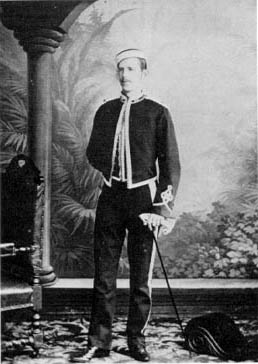
Samuel Liddel MacGregor Mathers as Lieutenant. Mathers and Wescott were the still living co-founders of the Golden Dawn. While Mathers took the position as decision maker (Imperator), Wescott served as Praemonstrator (responsible for the teachings and rituals of the order) and later as Chief Adept in Anglia – the representation of Mathers in England and the UK, as Samuel and his wife Moina meanwhile lived in Paris, France.
After several frictions with Mathers Wynn Wescott, co-founder of the Golden Dawn, resigned in 1897 from his position as “Chief Adept in Anglia”, and Mathers gave the position to Florence. Thus, she became the leader of the English lodges of the Order and the official representative and spokesperson for the only remaining (co-)founder (Samuel Mathers). However, it meant also to be more involved in the politics of the order. One of her first tasks in the world of politics was the removal of Frederick Leigh Gardner as officer. This was a delicate matter, as Gardner, a stock exchange broker, was also Mathers publisher for the (yet outstanding) Abra-Melin book and financial supporter; he supported Florence herself with commissions and overall his involvement in the order was important. However, still several members disliked his harsh style as an officer during ritual, and Florence and Mathers took unemotionally the necessary decision their position required.
Two years before, in 1894, she had published “A Short Inquiry concerning the Hermetic Art by a Lover of Philatethes”, which is her first philosophical paper on alchemy. Now, in 1896 she published “Egyptian magic” for the Collection Hermetica. Judged by volume it can also stand by itself and indeed is today often commercialized as a self-contained book. Florence received access to the third, secret order and created a group with members of the second Order, called “The Sphere Group”. She neglected her acting career even more in favor of the order, despite (manageable) financial pressure. That year, Shaw wrote to her: “…and now you think to undo the work of all these years by a phrase and a shilling’s worth of esoteric Egyptology“. It were these studies in Egyptology – among her scrying skills – which would impact and shape modern magic in several ways.
Florence Farr, Aleister Crowley, and the Order Revolt
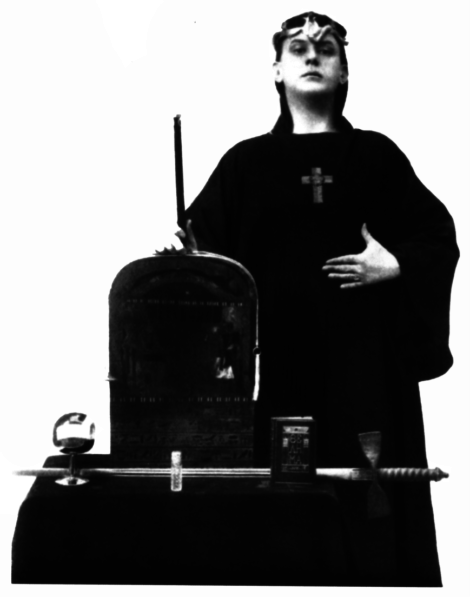
Aleister Crowley posing as Magus with the Stelae of revelation and magical weapons: wand, chalice, sword and the Book of the Law – the Liber Al Vel Legis
In 1897 Farr oversaw the initiation of a 23-year-old, promising magician into the order. As Frater Perdurabo (“I will endure”) Aleister Crowley joined the Golden Dawn. His magical skills and knowledge were widely respected or even admired, and as far as it seems Crowley respected Florence Farr likewise.
But soon Aleisters’private conduct raised concerns among the Victorian moralists of the order: rumors about an affair with married order member Elaine Simpson “Soror Fidelis” arose, as well as about his homosexuality. In 1900 he was searched for by the police, as Crowley and other Cambridge friends, were accused of homosexuality. To put things into context: It was the same year Oscar Wilde died broken after having spent three years in prison for the same criminal offense.
Maybe this is why Florence Farr denied Crowley’s admission to the second order, despite all his admitted brilliance. Interesting in this context is flying roll number 2. She only co-authored the Flying roll with a commentary on how to strengthen the “will” as main magical ingredient, but all in all the roll exhibited slight definitory similarities with Crowley’s later definition of will in Thelema.
The Battle of Blythe Road
But already in 1899, the Hermetic Order of the Golden Dawn was divided by conflicts about Mathers’ leadership style. Other members had a hard time accepting Florence female leadership, and again others had mixed feelings about the “Sphere Group”. The golden years of the Golden Dawn were apparently over. The admission of Crowley to the Adeptus Minor degree, in particular, was just the final straw. Yeats wrote in a private letter about the Crowley issue, that a magical order would not be a borstal. But Mathers initiated Crowley nevertheless into the second order.
An open conflict and revolt against Mathers followed. Later, in April 1900 Crowley tried on behalf of Mathers to overtake the premises of the order – which were leased on Florence Farr’s name – but was stopped by Yeats, who invoked the power of earthly law and justice – with success. Crowley had to give in to police and lawyers. Mathers and Crowley had lost the episode also known as “the battle of Blythe Road”.
Mathers vs.Wescott

William Wynn Westcott (17 December 1848 – 30 July 1925), freemason, theosoph, magician and co-founder of the Golden Dawn and Supreme Magus of the S.R.I.A. His magical motto in the order was Frater “Sapere Aude” (“Have the courage to think for yourself”). Wescott, Mathers and Robert William Woodman (who already died in 1891) founded the Golden Dawn with the permission of the “secret chiefs” – An order of Rosicrucians, represented by the German countess “Anna Sprengel”, whose identity never could be cleared.
As dissent reigned between the Adepts Florence offered her resignation to Mathers in January 1900. In reply, Mathers refused. He assumed an intrigue to get Wescott back into the order for the latter to regain leadership.
Thus, in his reply to Soror S.S.D.D. (Florence ) Mathers accused co-founder Westcott, that the latter would never have been in contact with the secret chiefs of the order. Any correspondence he may show in this regard would be a mere fraud – only he, Mathers would stay in contact with the secret chiefs and all order material, of both the inner and the outer order were of his, Mathers, doing.
Maybe Mathers was unaware of the impact this assertion would have: it came as a shock for the members of the order, as it implied Wescott’s correspondence with Anna Sprengel was also faked, hence, the founding documents could not be authentic: was the order’s foundation based on a fraud? Did Florence Farr in her leading position initiate candidates into an order based on a forgery? Crowley reported in his “Confessions” her morals were deeply affected. But, the same sense of duty which allowed her before to remove Gardner, despite all his merits, as an officer now allowed her to stand up to Mathers.
Mathers Expelled
Florence brought these accusations to Yeats and six other members. Soon, three of them formed with seven Adepts of the Golden Dawn a committee to investigate the matter. But the work of the committee was largely without results. Westcott did not collaborate and Mathers even refused to accept the committee. It is not even clear with how much vigor this committee conducted the investigation. The documents available to Ellic Howe do not render a very confrontational picture. Anyways, Mathers was offended. In his view, they were oathbreakers, as one of the oaths for the higher ranks in the order asked for obedience to the Imperator. Mathers removed Farr as his representative in England and the Isis-Urania Temple, but now the real revolt started: as a response, Mathers was expelled from the order.
Horniman (expelled by Mathers in 1896) re-joined the Golden Dawn and Florence, Yeats and Horniman tried to rebuild the order. However, during all these scandals including the judicial aftermath of Crowley’s takeover attempt the Golden Dawn transformed from a secret society into a public ridicule made laughable before the court and in the press.
Moreover: the magicians of the Golden Dawn were at war. Was it Mathers before who magically took a pack of peas and baptized them with the names of the rebels just to summon the demons over them, now it was Florence’s Sphere Group who evoked the spirit of Aleister Crowley’s mistress and instructed her to abandon Frater Perdurabo. W.B. Yeats indeed reported, that a few days later a woman whose identity he kept confidential, approached them and told she would not be ready to only break with Crowley, but to confess to the police. Yeats congratulated himself and was pleased with the outcome of their hard magical training.
Controversies Around Florence Sphere Group

Annie Horniman (3 October 1860 – 6 August 1937), daughter of a wealthy merchant family and later theatre patron, who worked closely with Yeats, Shaw and Florence Farr. As a Golden Dawn member she remarked herself in the later years trough rigid thinking – the reason why Mathers expelled her was her harsh turn on a fellow member who was occupied with sexual magical theories. After rejoining the order after the revolt of 1900 she started to take on Florence and her Egyptian magic.
But even with distance to Mathers and Crowley peace did not sink in. The worm-can was opened and soon Florence friend and partner in theatre and business, Annie Horniman developed into a prominent critique of the Sphere Group.
In particular, she criticized Florence introduction of Egyptian symbolism into Western magic, while Yeats tried in vain to mediate and also had to take sides. Not only he envisioned the order as a place where the members would meet and exchange openly rather than being divided into closed sub-circles (“astral unions” as he called it), but he also had to acknowledge the obvious: things were out of control.
Furthermore, Farr herself started to make exceptions to the rules (for example by secretly admitting a novice to protect her social status as a noble lady) resulting in an inconsistent leadership style.
Turn Towards Mysticism
Florence resigned from her position in 1902 and the Golden Dawn broke into several splinter groups: Mathers tried to gather new followers in an order named Alpha et Omega, A.E. Waite transformed the Isis-Urania temple into a Christian mystical order without practical magical implications and Felkin founded the Stella Matutina as successor for the spirit of the initial Golden Dawn. W.B. Yeats took the role of the Imperator in 1911 and remained a member until 1923.
Slowly mysticism started to outweigh Florence’s passion for ceremonial magic. This is an experience which probably all magicians make at some point: the swing of the pendulum from the right pillar on the tree of life to the left one – the point when magic turns into theurgy. S.S.D.D. (“Sapientia Sapienti Dona Data”) had surpassed the vast majority of Golden Dawn members and especially her critique Annie Horniman, among who most (still) relied so much on the usage of external tools, sigils and accessories to get into contact with the inner realms or to produce results.
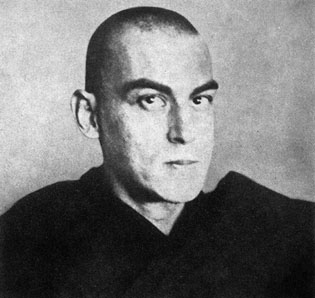
(Charles Henry) Allan Bennett or Bhikkhu (this is a title for an officially ordained Buddhist monk) Ananda Metteyya was the second English ever to be initiated as a monk into the tradition of the Theravada Buddhism. He studied many years Buddhism and Eastern Esotericism in the East, was a teacher and friend of Aleister Crowley and can be described as the man, who introduced Buddhism to the West. In England he founded the first Buddhist mission, a journal and the Buddhist society. He introduced Florence Farr to the Tamil mystic and politician Ponnambalam Ramanathan, which Florence later followed to Ceylon.
And as Allan Bennet, her powerful partner in ritual, Florence Farr turned eastwards. In June 1902 she joined the Theosophical Society in London where she met upon Bennetts introduction Sir Ponnambalam Ramanathan, the Hindu and Christian mysticist who was in London to lecture on Eastern philosophy and who later became a member of the Tamil Parliament in Ceylon. Not without consulting her spiritual guidance on the inner planes she realized that the higher powers work through many vehicles. This was an answer to her delight. Classical Christianity and monolatry had never been for her. Eastern meditation techniques were the natural next step of her own discoveries through scrying and her studies of the book of the dead.
Florence sympathized also with Ramanathan’s desire and plans to enforce educational rights for young women in Ceylon (Sri Lanka). During this time, she became more involved with her acting career. She wrote and produced two plays that were inspired by Egyptian esoteric themes, such as “The Shrine of the Golden Hawk” and “The Beloved of Hathor”.
In between 1902 and 1906, she was active in the theater scene, performing, directing, and involving in the musical composition of several productions for various theaters in London. She also continued her association with Yeats, by collaborating with his Abbey Theater and performing his poetry to music. In between 1906 and 1907, she and Yeats had a romantic affair, but she also toured in Europe and then in America. Thus, the relationship turned out to be more a distant one, and furthermore, Florence always put the necessities of her spiritual life above any relationship. Maybe she was even bored within an all-set relationship, as Greer suspects.
Florence’s Late Forties
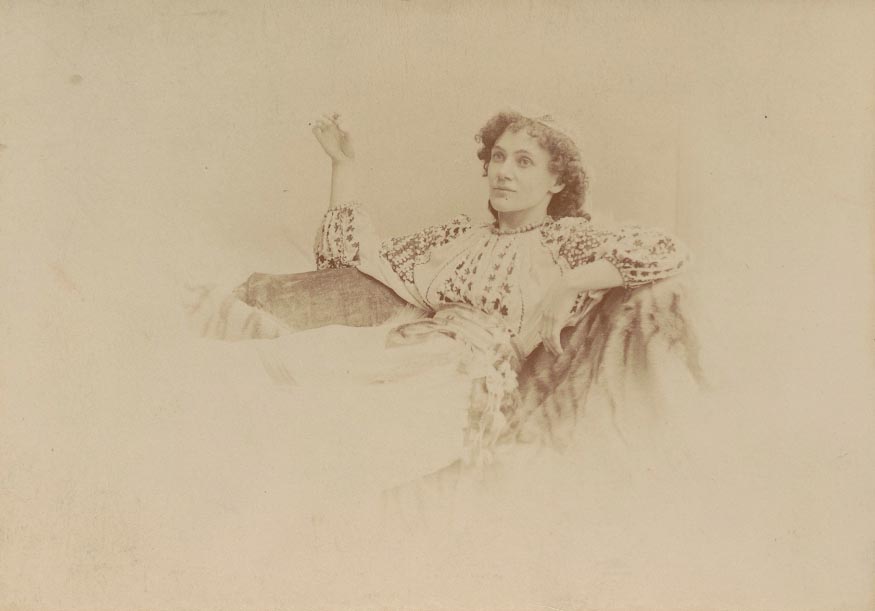
The theater would remain a constant for Florence during all her work life in the West, as well as the collaboration from time to time with Shaw. Photo from 1896 by George Bernard Shaw of Florence Farr as Louka, a servant girl from the Balkans in the “Arms and the Man”, a play at the Avenue Theatre of London written by Shaw.
In America, Florence met Pamela Coman Smith, the artist, and occultist who illustrated the classical Rider-Waite-Smith tarot deck, who became her stage manager. Overall, this time was characterized by exoteric activities: she was active as an actress and director and produced several written documents. Not only on theater, but also on women’s rites and Egyptian esoterics – all of them published in various journals such as the British Journal of Art and Politics, the Theosophical journal, and the New Age journal.
In an essay entitled “Our Evil Stars” which she published in the New Age journal in October 1907, Florence writes that legal reforms are not sufficient to truly liberate women, suggesting that there is more than needs to come from within, a conviction that one’s self is worthy and able to emancipate itself:
“We must kill the force in us that says we cannot become all we desire, for that force is our evil star that turns all opportunity into grotesque failure….So let us each recognize the truth that our first business is to change ourselves, and then we shall know how to change our circumstances.”
But also in a very practical sense her view’s were so modern sometimes, that they have not gained fully acceptance until today: in her article “The Rights of Astaroth” (New Age Journal 1907) she not only asks for the legalization of prostitution for the well-fare of prostitutes, but revers it as an ancient sacred vocation which should be treated accordingly:
“Ancient Egyptians, ancient Hindus agreed that the vagaries of nature must be obeyed; and certain women, trained as dancers, were dedicated to the gods and their worshipers. In their temples prostitution was a sacred institution.[…] The Hindu, for instance, considers that woman is part of the Immortal Mother of Life herself and to unite with a woman is to clasp the Universe in your arms and taste the ecstasy of Being.”
In 1908 she opted for a warm and affordable living at the French Riviera during the winter months and kept publishing also on occult matters. Her article submitted to the Occult Review on Symbols she briefly compared the meaning of various magical symbols in different currents and civilization starting with Egypt, while Yeats wrote her from London the city would be “unendurable when you are not in it”. Florence returned to London during summer, but she also kept touring Europe.
Hindu Burial for an Egypt Magician

Florence Farr moved to Ceylon to work as a teacher and principal a Girls College, founded by her friend, Sir Ponnambalam Ramanathan. Yeats however speculated that Florence did not want to be seen as she grew older or maybe even ill.
In 1910, Florence was now 50, she published her book “Modern Woman: Her Intentions” and a collection of aphorisms: “A calendar of Philosophy”. Information about the following two years is scarce, but financial pressure remained a constant.
In 1912, at the age of 52, Florence moved to Jaffna, Sri Lanka after selling all of her possessions, in order to serve as a teacher and principal at the Uduvil Ramanathan Girls College, founded by her friend, Sir Ponnambalam Ramanathan. Florence’s version was that she intended to end her days “in the society of the wise”, but Yeats suspected she did not want to be seen aging or ill.
For unknown reasons, she resigned in 1916 from her position as a teacher and principal, but remained at the school in Jaffna. Greer supposes it may have been the first signs of illness, and indeed Florence was diagnosed with breast cancer by the end of the year and underwent a mastectomy. In February 1917, she wrote to her friend, W.B. Yeats:
“Last December I became an Amazon and my left breast and pectoral muscle were removed. Now my left side is a beautiful slab of flesh adorned with a handsome fern pattern made by a cut and thirty stitches which were ‘put in’ by the eminent surgeon of Colombo, Dr (Samuel Chelliah) Paul.”

Florence’s letter to Yeats, from 1917, in which she told him of her masectomy on her left breast, which made her an Amazon, and drew a picture of her scar for him.
She included in the letter a self-portrait she drew of her mastectomy scar. Despite professional medical attention, the cancer kept spreading. Two months later, on April 29, 1917, Florence died aged 56 in the Colombo hospital. To honor her last wishes, her body was cremated according to the Hindu rites and the ashes were scattered in the sacred Kalylaani River by her friend, Ramanathan. Yeats married six months later.
In her 1910 article in the occult review on symbols, she described death as “the consummation of initiation”. And indeed, it was Florence Farr, who discovered the Egyptian Book of the Dead and it’s significance for the magician.
“I fly up to to heaven and alight upon earth and mine eye turneth back towards the traces of my footsteps. I am the offspring of yesterday. The caverns of the earth have given me birth, and I am revealed at my appointed time.”

Photo of Florence Farr as Aleel in her performance at the Abbey Theatre, a role from “The Countess Cathleen” written by William Butler Yeats.
For Florence, these verses from the sixty-fourth chapter of the Book of the Dead were the “Triumphant Death Song of the Initiated Egyptian”, who like the slain Osiris will rise again – a grand work of “spiritual alchemy” as she declares in her book Egypt magic.
As Mary Greer observed: from the ancient Egypt texts, it was Florence, who re-discovered (like so many other things which nowadays seem given to the younger generations of occultists) that the magician can invoke the gods themselves, thus see, speak, act and command as the gods themselves.
A practical consequence of this discovery was that it would not be necessary to use threats on the behalf of god (hence, as a servant of god) as typically applied in (monotheistic) Western magic to call upon the spirits. Florence discovered that the magician could directly invoke the god and then summon his servants. And this is what she did in her famous evocation of Taphthartharath: she spoke to the spirit of Mercury not as a (wo)man, not as a magician, but as the eternal Toth, Hermes, Mercury himself. How could Taphthartharath not appear?

www.theoldcraft.com – The Old Craft


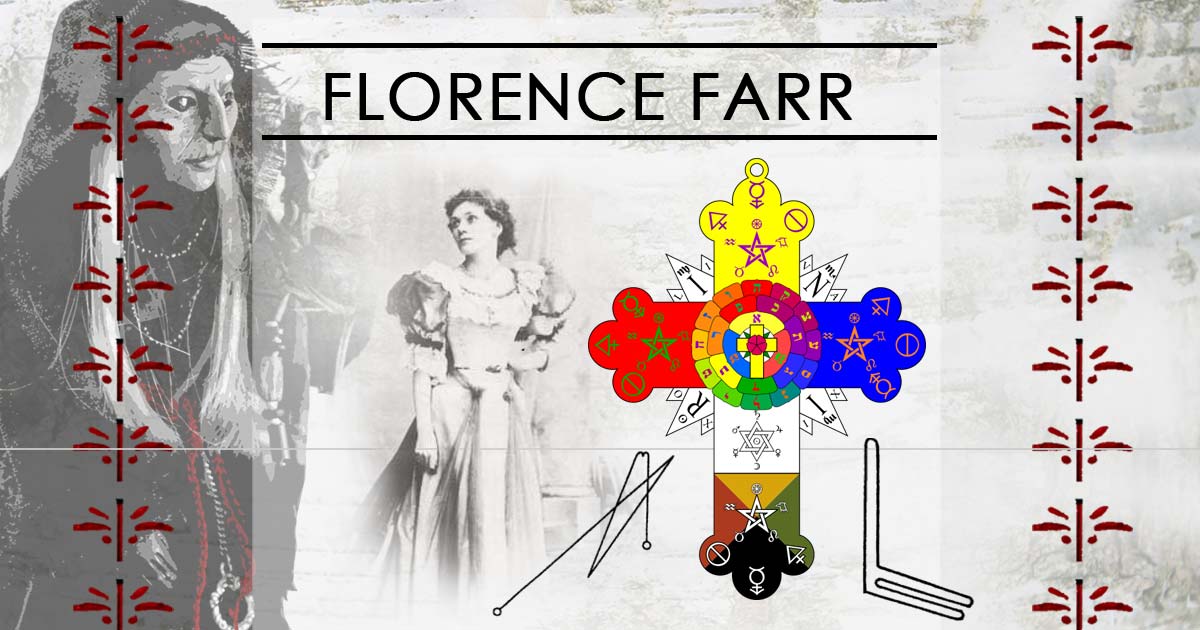

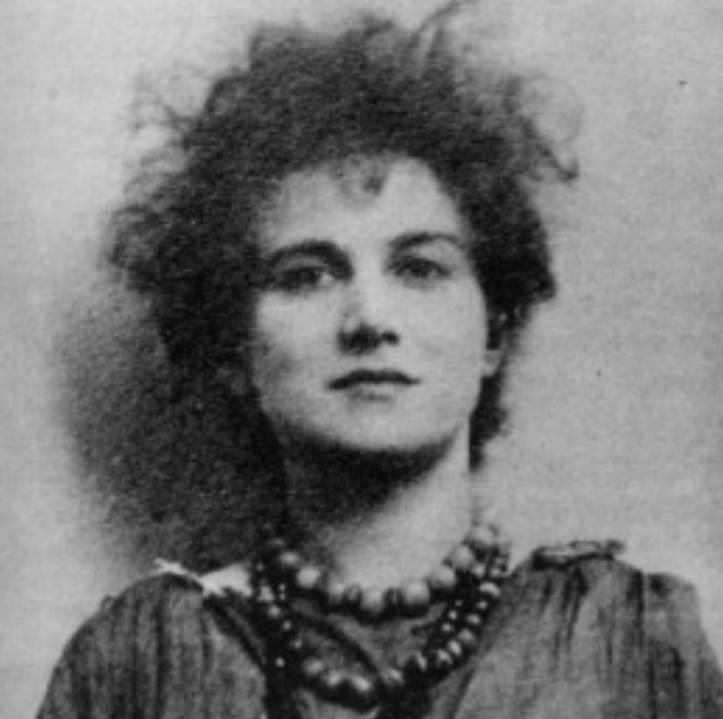
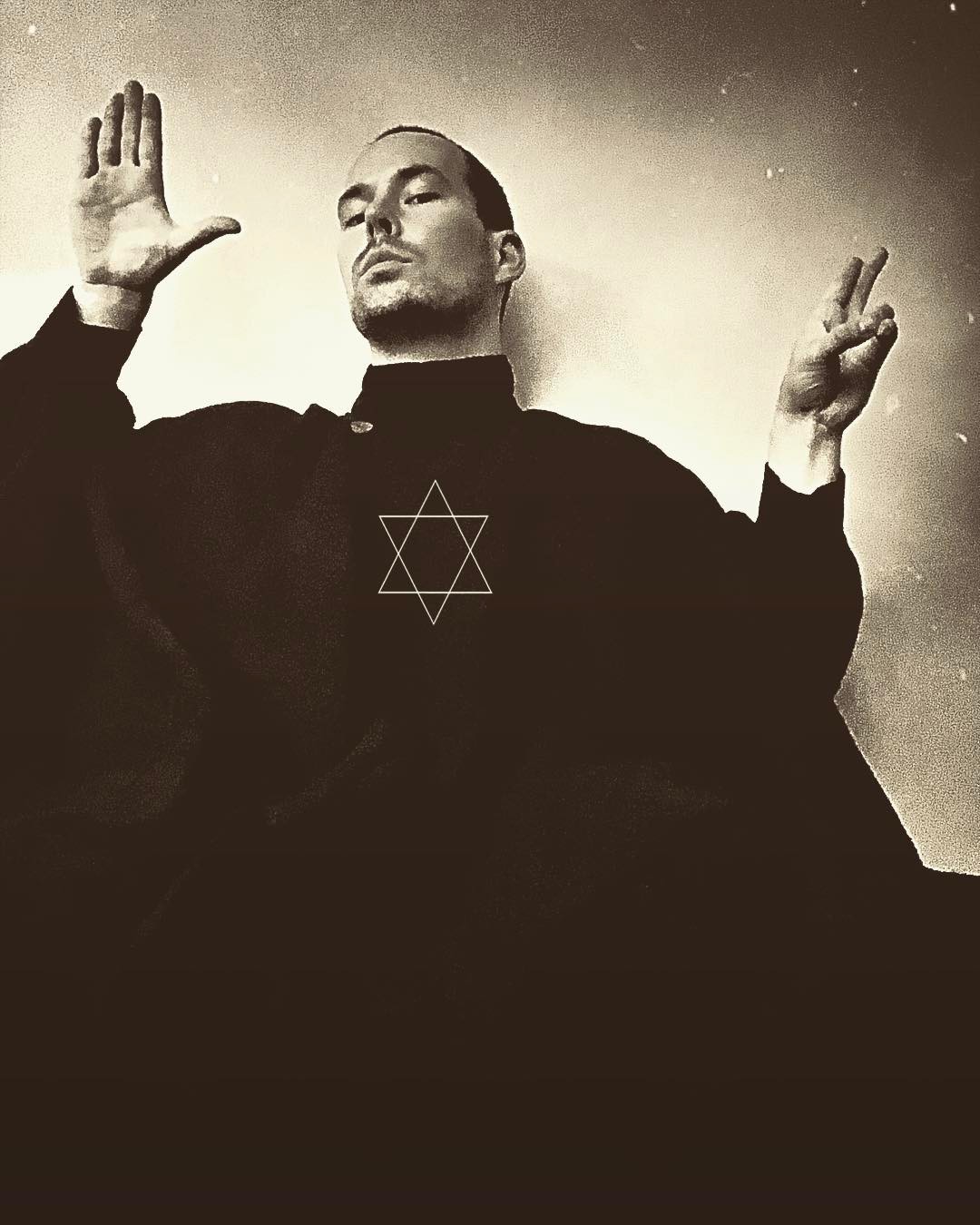
Mark A. O'Blazney | April 29, 2018
|
+
Caroline | April 30, 2018
|
An illuminating. article honoring a real magistra of the occult.
Alexander | April 30, 2018
|
Indeed, a fascinating magician of rare skill and dedication
Paul Garza Jr. | May 1, 2018
|
Thank you for possting this wonderful tribute and remembrance of Florence Farr. She was underestimated in her own life span but continues to remain a powerful presence in and influence upon Western occult traditions. The breadth of her contributions to stage, literature, social causes, in addition to magic and spirituaity is truly amazing. An extraordinary being. She continues to inspire me.
Alexander | May 1, 2018
|
Yes, Florence Farr is a wonderful example for the many fascinating, highly-educated and cultural significant members the Golden Dawn once had. IT was a very pleasant write
Jessica Tipper | October 25, 2018
|
Hi,
This is a wonderful article! I’d like to reference your research here in my research into the golden dawn for my Fine Art degree, what name do I reference you as? and do you happen to have a bibliography for this article?
Many Thanks
Jessica Tipper
Alexander | October 25, 2018
|
Hi Jessica,
thanks – You’ve got mail. The article was never written with academic purposes in mind, but as an inspirational piece for other practitioners. However, I think we manage to get the sources together
Best
Stephen Atakorah | January 16, 2023
|
Ghana